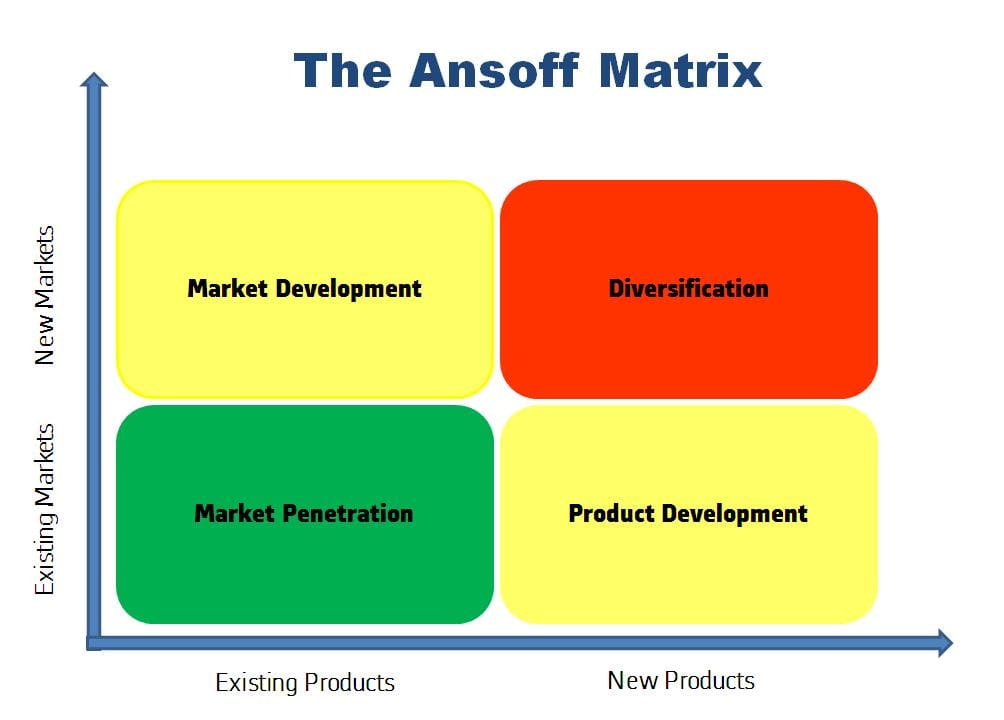5 Steps for Choosing the Right Growth Strategy
This standard operating procedure (SOP) outlines the steps for identifying and implementing your organization's most suitable growth strategy.

Introduction
The Ansoff Matrix provides a framework for determining the best approach based on your company's current offerings and target market. Here's how to use it.

This standard operating procedure (SOP) outlines the steps for identifying and implementing your organization's most suitable growth strategy.
Step 1: Assess Your Current Position
- Evaluate your current products or services and their performance in the market.
- Identify your existing customer segments and their characteristics.
Step 2: Determine Your Growth Objectives
- Set clear, measurable growth targets for your company.
- Align your growth objectives with your overall business strategy.
Step 3: Analyze the Ansoff Matrix Quadrants
- Market Penetration
- Determine if you can increase sales of existing products to current customers.
- Consider tactics such as conversion optimization, pricing adjustments, and referral programs.
- Focus on a marketing-led growth approach to drive conversions and leverage existing product-market fit.
- Market Development
- Evaluate the potential for selling existing products to new customer segments, industries, or geographical markets.
- Define new ideal customer profiles (ICPs) and personas for targeted expansion.
- Invest in sales and marketing efforts to engage new prospects and gather market feedback.
- Explore partnerships to access specific market segments or lower the cost of sales.
- Product (or Capability) Development
- Assess the opportunity to sell new products or services to existing customers.
- Prioritize product development based on customer requests and market demand.
- Consider acquiring rights to integrate complementary technologies or capabilities.
- Adopt a product-led growth approach, focusing on innovation and R&D.
- Diversification (Pivot)
- Identify unique capabilities that can be leveraged to create entirely new products or services for different markets.
- Evaluate the feasibility and potential impact of a pivot strategy.
- Be prepared to adjust your positioning and invest in both product development and market penetration.
Step 4: Select Your Growth Strategy
- Based on your analysis of the Ansoff Matrix quadrants, choose the growth strategy that aligns best with your objectives and resources.
- Consider the trade-offs between focusing on high-value customers (requiring significant marketing and sales efforts) and pursuing a product-led growth approach with high viral potential.
Step 5: Implement and Monitor
- Develop a detailed action plan to execute your chosen growth strategy.
- Allocate the necessary resources and assign responsibilities to team members.
- Establish key performance indicators (KPIs) to track progress and measure success.
- Regularly review and adjust your strategy based on market feedback and performance data.
Remember...
...to remain agile and adapt your approach as market conditions and your company's capabilities evolve.